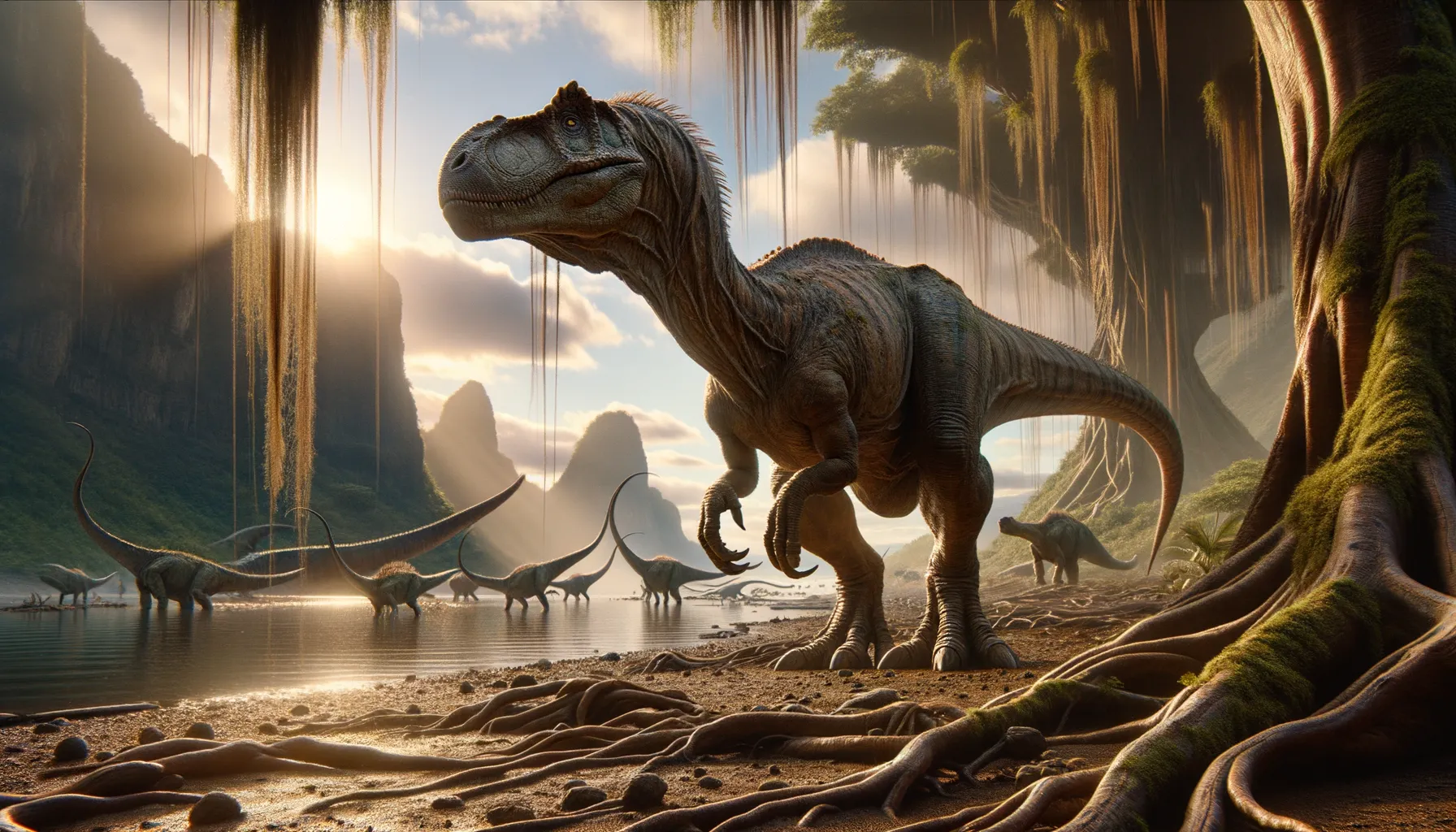
Nanshiungosaurus
Gentle giant with a green diet.
Period
Cretaceous
Length
About 15-20 feet long.
Height
Approximately 6 feet tall.
Weight
Around 1-2 tons.
Nanshiungosaurus was a therizinosaur, known for its unique body shape and herbivorous diet. This dinosaur lived during the Cretaceous period in what is now China. It had a large body with long claws, likely used for foraging for plants. Despite its size and formidable appearance, it was not a predator, focusing instead on a plant-based diet.
Diet
Nanshiungosaurus was herbivorous, primarily feeding on a variety of plants. Its long claws and reach helped it access vegetation in its environment, making it an efficient browser.
Hunting
As a herbivore, Nanshiungosaurus did not hunt other animals. Instead, it focused on finding and consuming plant matter in its ecosystem. Its anatomy suggests it was adapted to efficiency in foraging.
Environmental challenges
They faced challenges from predatory dinosaurs, which made them rely on their size and defensive posturing for protection. Additionally, they had to compete with other herbivores for the same food sources. Climate changes during the Cretaceous could also affect the availability of their preferred plants. Seasonal changes might have also influenced migration patterns to find resources.
Speed
Likely slow, given its size and structure.
Lifespan
Estimated to be several decades in the wild.
First discovery
Discovered in China in the 1970s.
Fun Facts
- Nanshiungosaurus was a dinosaur that lived during the Late Cretaceous period, roughly 70 million years ago.
- This dinosaur was notable for having a long neck, which might have helped it reach high foliage or scan for predators.
- It belongs to the therizinosaurid family, which is known for having large claws and an unusual body shape.
- Nanshiungosaurus was likely an herbivore, using its claws to pull leaves and branches closer to eat.
- The first fossils of Nanshiungosaurus were discovered in China, specifically in the Guangdong Province.
- Its name, Nanshiungosaurus, means 'lizard from Nanxiong', referring to the location where it was found.
- Although not very large compared to other dinosaurs, Nanshiungosaurus had a distinctive set of features that make it stand out in the fossil record.
Growth and Development
Nanshiungosaurus likely experienced rapid growth in its early years, typical of dinosaurs. Evidence suggests it had a continuous yet slow growth after reaching maturity. Juveniles were smaller and possibly faster to escape predators. Parental care might have played a role in their early development, ensuring they reached maturity.
Habitat
Nanshiungosaurus inhabited forested areas where food sources were abundant. These environments offered a mix of trees and low-lying plants, crucial for its diet. It preferred areas where water was available, supporting both its hydration needs and plant growth. Changes in sea levels during the Cretaceous possibly influenced their habitat range.
Interaction with other species
Nanshiungosaurus coexisted with various other species, both herbivorous and carnivorous. Its large size might have deterred some predators but also placed it in competition with other large herbivores. It likely stayed in groups to fend off threats and access food resources efficiently. They played an essential role in their ecosystem, contributing to vegetation management.
Natural lifespan
Nanshiungosaurus could live up to several decades under natural conditions.
Reproduction
Nanshiungosaurus, like many dinosaurs, likely laid eggs in nests they constructed. Evidence suggests possible communal nesting sites, which increased survival rates. The incubation of eggs might have required specific environmental conditions, such as temperature and humidity. Hatchlings were relatively independent but remained close to adults for protection.
Social behaviour
They likely lived in small groups, which offered protection against predators. Social structures could have involved hierarchy based on age or size. Communication within groups might have been necessary for coordinating movement and foraging. Bonding among members helped ensure survival and success in reproduction.
Fossil locations
Its fossils have been primarily found in the Xinjiang region of China. These discoveries help paleontologists understand the diversity of dinosaurs in Asia during the Cretaceous period. The sedimentary layers where fossils are found suggest a habitat with rivers and wetland areas. Discoveries in similar layers could indicate more undiscovered species sharing the same environment.
